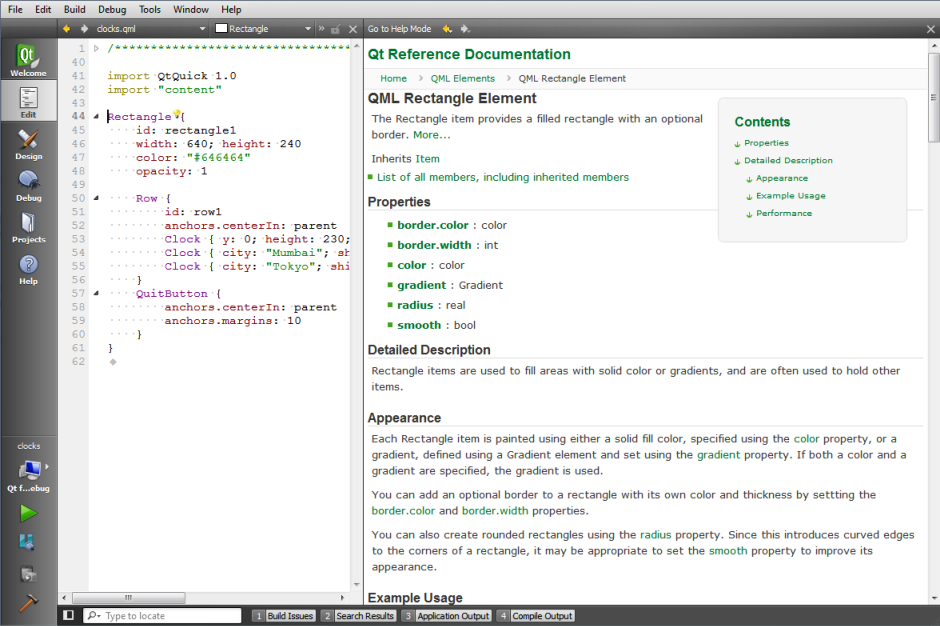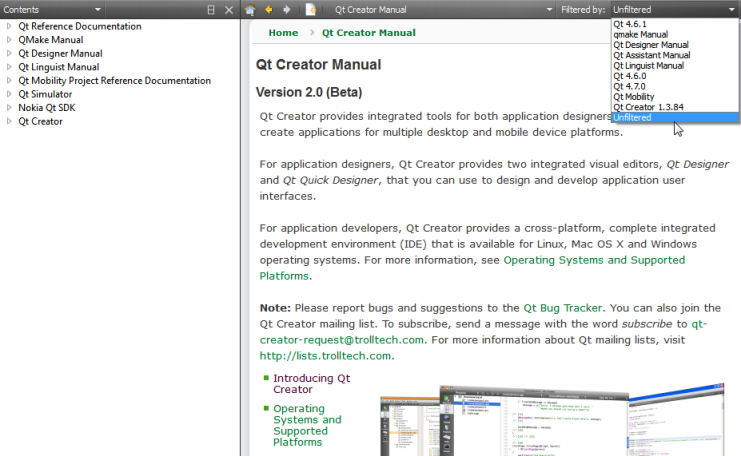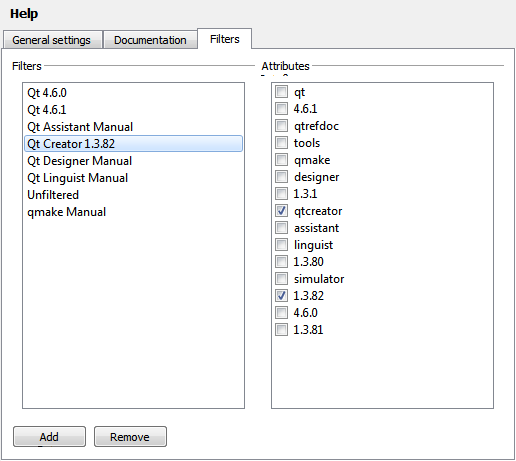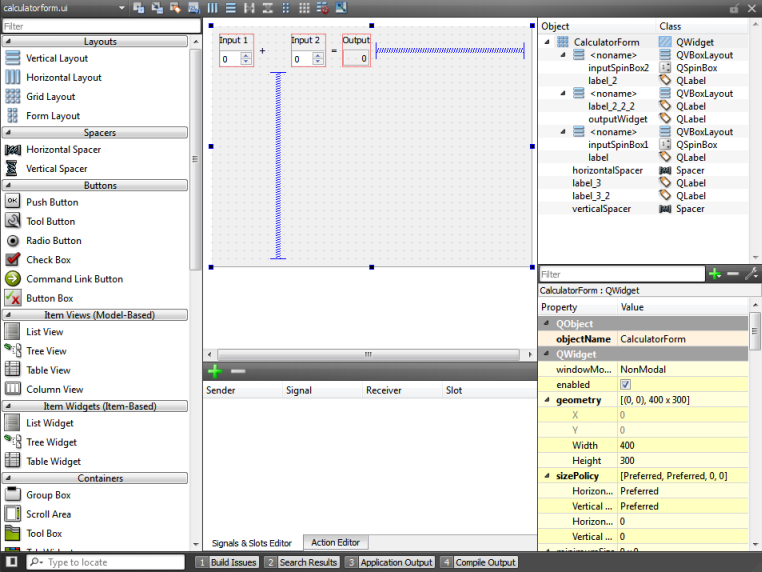Quick TourThe figure below shows some of the components of Qt Creator in Edit mode.
Qt Creator has been localized into several languages. If the system language is one of the supported languages, it is automatically selected. To change the language, select Tools > Options > Environment and select a language in the Language field. The change takes effect after you restart Qt Creator. Qt Creator ModesThe mode selector allows you to quickly switch between tasks such as editing project and source files, designing application UIs, configuring how projects are built and executed, and debugging your applications. To change modes, click the icons, or use the corresponding keyboard shortcut.
Certain actions in Qt Creator trigger a mode change. Clicking on Debug > Start debugging > Start debugging automatically switches to Debug mode. Browsing Project ContentsUse the sidebar to browse files, projects and bookmarks.
You can select the content of the sidebar in the sidebar menu:
You can change the view of the sidebar in the following ways:
Viewing Project FilesThe sidebar displays projects in a project tree. The project tree contains a list of all projects open in the current session. The files for each project are grouped according to their file type. You can use the project tree in the following ways:
Viewing OutputThe task pane in Qt Creator can display one of the following panes:
Output panes are available in all modes. Click the name of an output pane to open the pane. To maximize an open output pane, click the Maximize Output Pane button or press Alt+9. To open the General Messages and Version Control panes, select Window > Output Panes. Build IssuesThe Build Issues pane provides a list of errors and warnings encountered during a build. The pane filters out irrelevant output from the build tools and presents the issues in an organized way. Right-clicking on a line brings up a context menu with options to copy the contents and to show a version control annotation view of the line that causes the error message. The Search Results pane displays the results for global searches, for example, searching within a current document, files on disk, or all projects. The figure below shows an example search result for all occurrences of textfinder within the "/TextFinder" directory. The Application Output pane displays the status of a program when it is executed, and the debug output. The figure below shows an example output from qDebug(). The Compile Output pane provides all output from the compiler. The Compile Output is a more detailed version of information displayed in the Build Issues pane. Qt Creator comes fully integrated with Qt documentation and examples using the Qt Help plugin. You can display external documentation in the Help mode. To augment or replace the documentation that ships with Qt Creator and Qt: For information on how to prepare your documentation and create a .qch file, see The Qt Help Framework. You can filter the documents displayed in the Help mode to find relevant information faster. Select from a list of filters in the Filtered by field. The contents of the Index and Contents pane in the sidebar change accordingly. You can modify the filters to include external documentation, for example, or you can define your own filters. To construct filters, you can use the filter attributes that are specified in the documentation. Each document contains at least one filter attribute. If several documents contain the same filter attribute, such as tools, you can use that attribute to include all those documents. To add filters: To modify filters, select a filter in Filters, select the attributes, and then click Apply. To remove filters, select them in Filters, and click Remove. Qt Creator caters not only to developers who are used to using the mouse, but also to developers who are more comfortable with the keyboard. A wide range of keyboard and navigation shortcuts are available to help speed up the process of developing your application. Qt Creator automatically opens all .ui files in Qt Designer. To change the layout of Qt Designer user interface elements: When this option is unchecked, you can change the layout. To change Qt Designer properties, select Tools > Options... > Designer. To preview the settings, select Tools > Form Editor > Preview, or press Ctrl+Alt+R. For more information on Qt Designer, see Qt Designer Manual.
X
|




















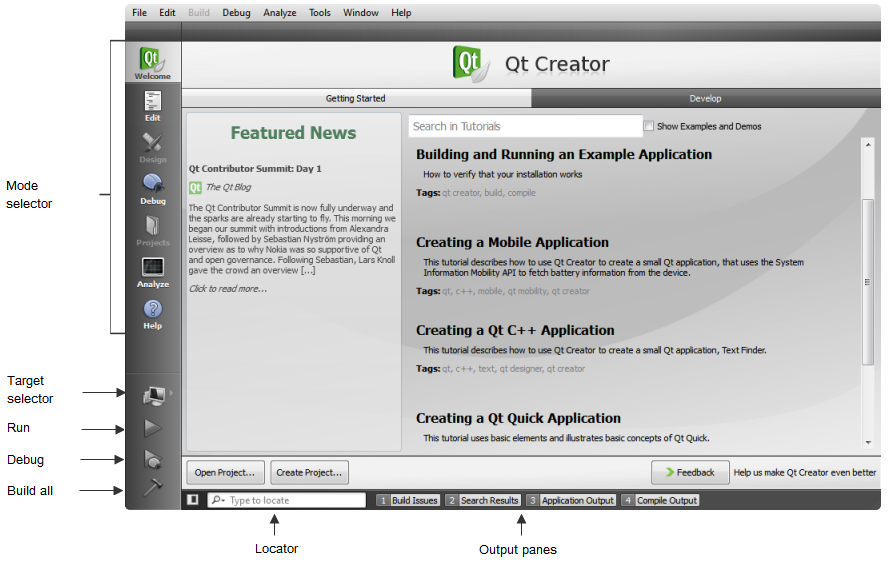
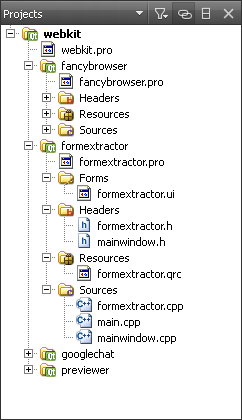
 or press Alt+0 (Cmd+0 on Mac OS X).
or press Alt+0 (Cmd+0 on Mac OS X). . Select new content to view in the split view.
. Select new content to view in the split view. .
. and select Simplify tree.
and select Simplify tree. .
.



